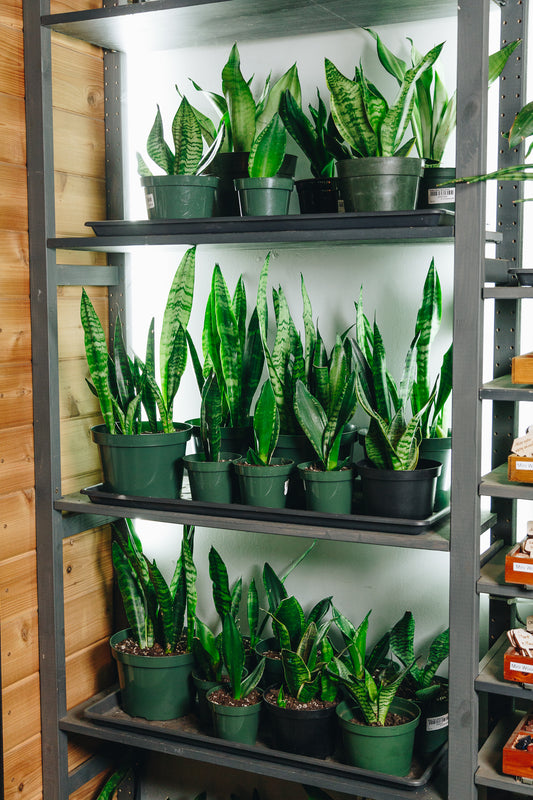
Tigers Jaws got their name from the spines that line their leaves that look like sharp tiger teeth . Originally from the dry rocky parts of South Africa, Tigers Jaws will be happiest with lots of sunlight and heat. They are not cold hardy, so if you place it outside in the summer, remember to bring it in at night. With 3-4 hours of direct sunlight Tiger Jaws can have yellow daisy like blossoms in the Fall. It’s stemless, star shaped clumps will stay low to the ground, making Tiger Jaw an interesting addition to a tray succulent garden. Make sure you plant your Tiger Jaw in a container with plenty of drainage to avoid root rot.
Light
Tigers Jaws like high light that mimics their natural growing environment, especially during their growing season. Remember to transition into direct light slowly to avoid sun-burning your plant. If you don’t have any high light windows, a grow light can be used to supplement. We reccomend these if you need a grow light bulb.
Water
From Spring to Fall water once a week depending on the humidity of your environment (keeping your soil lightly moist) . In the winter give Tigers Jaws a break, letting the soil dry out entirely in-between watering. Having good drainage is essential to the happiness of succulents. Planting in a small well-draining container with cactus mix or a moderately dry blend of potting soil and sand will help you avoid over watering. If you have a pot with a hole and a dish under it make sure to empty water from the dish afterwards.
Fertilizing
Tigers Jaws can be fertilized during it’s growing season, and does not require fertilizer during it’s dormant season.
Long Term Care
Tigers Jaws will likely out grow their container within a few years. Keep them warm and dry and they can last you many years.
Pet info
Tigers Jaws are not toxic to animals



